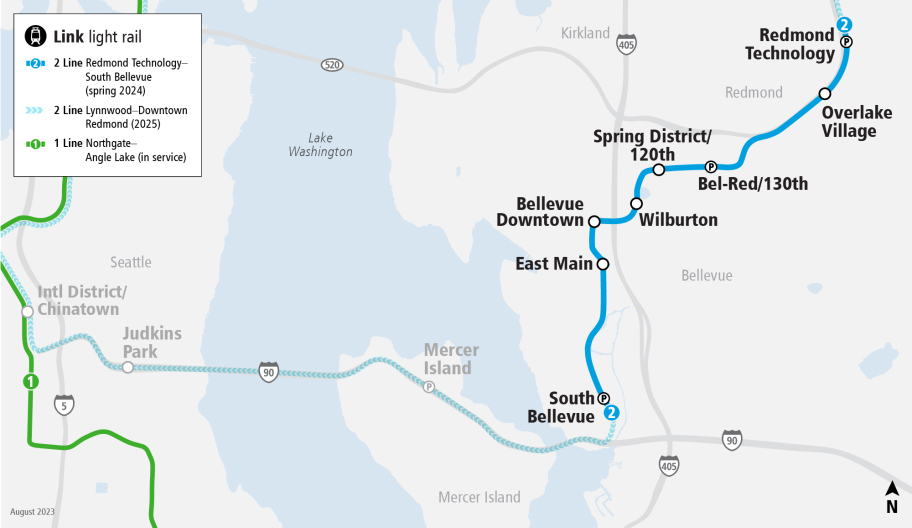
BELLEVUE, Wash. — Sound Transit will begin pre-revenue testing on a portion of its East Link light rail line starting today (Nov. 1, 2023), a step toward the beginning of service between the South Bellevue and Redmond Technology stations next spring.
The transit agency cautions that pedestrians and drivers should be alert for trains at any time of the day or night as training begins for operators and maintenance workers, as well as continued testing of the route and equipment.
The move is a step toward opening an isolated portion of the East Link project, also known as the 2 Line. Sound Transit made the decision earlier this year to move toward opening that portion of the line without waiting for the portion along Interstate 90 that will run from South Belleview to connect to the existing light rail system at the International District/Chinatown station. That portion of the route is not expected to be ready until 2025 because of construction problems that required rebuilding or repairs on and around a floating bridge across Lake Washington [see “Construction delays push back opening …,” Trains News Wire, Aug. 22, 2022].














I have not seen any of the press here in Seattle ask any questions about the I-90 floating bridge portion of the line that is being delayed. Sound Transit was boasting during construction that the bridge would have unique engineering that had never been done before. I can help but wonder if the ‘unique engineering’ doesn’t actually work as intended and they are trying to figure out a way to make it work. But as I said, no one in the press seems to be asking Sound Transit that question, they just take the official line that the contractor did the work wrong at face value.
Make sure engineer reads the safety manual *before* the first train rolls!